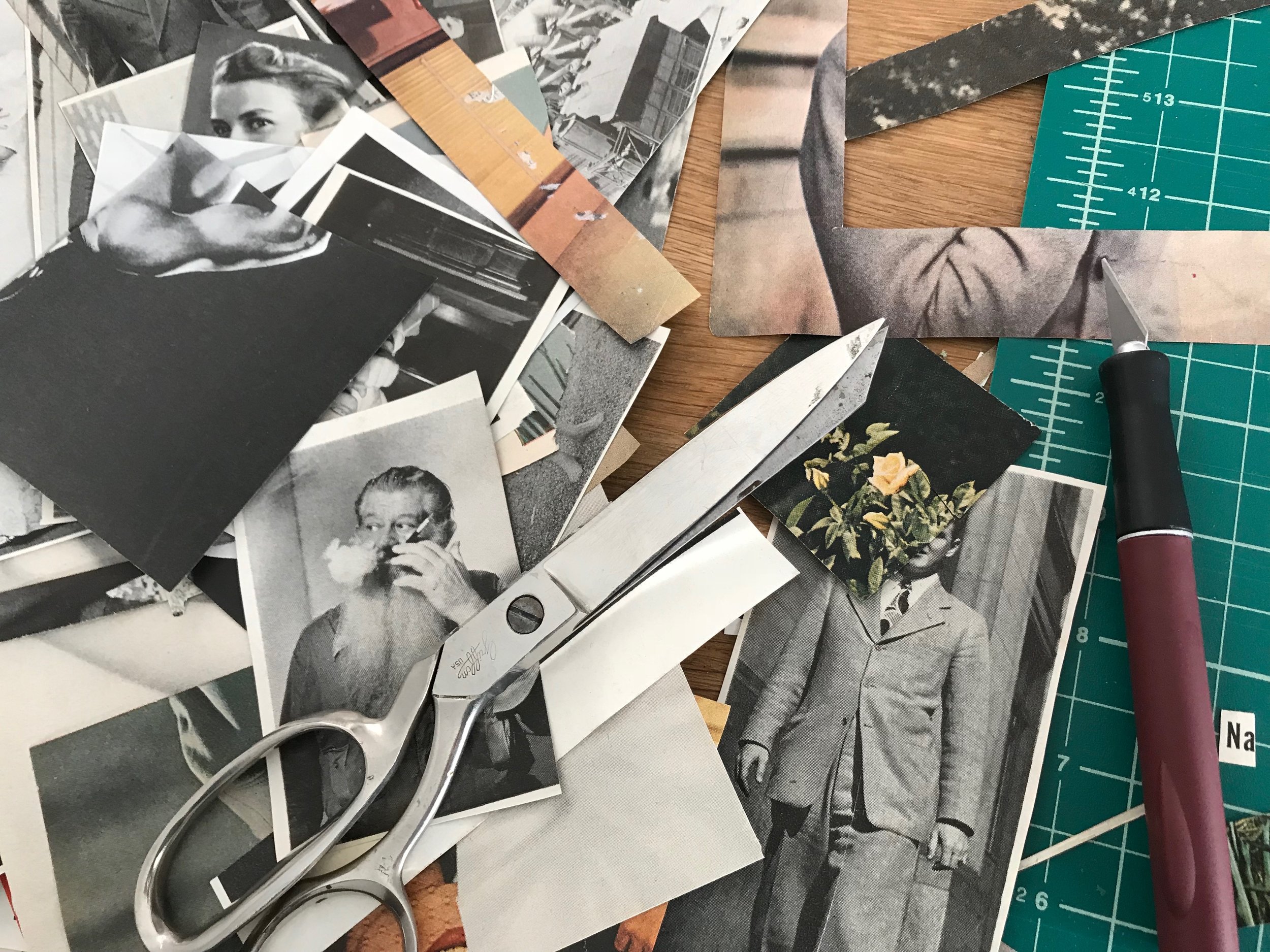Nothing is perfect and that's fucking beautiful/
Cut-and-paste collage is never perfect.
The cuts are rough. Things never line up as perfectly as you want. The paper buckles or wrinkles from the glue (or it is so old to begin with that it crumbles in your fingers).
And no two fragments ever truly go together.
Human error is a feature (not a bug) of analog collage, because, well, it's made by humans.
In an age when technology seems to be isolating us more than bringing us together, there's something to be said for embracing tangible, messy, human things.
A recent episode of Seth Godin's podcast, Akimbo, touches on this idea of quality and imperfection and the concept of six sigma (a set of techniques meant to improve the quality of the output of a process by identifying and removing the causes of defects and minimizing variability).
In the show, he basically says that, in many cases, perfect isn’t the point.
"As humans, the six sigma thing can get out of hand. As humans, maybe we have enough of that sort of quality. And there might be a different sort of quality that we seek. This could be the quality of wabi-sabi. Wabi-sabi means 'imperfect, handmade, irreplaceable.' Wabi-sabi tells a story. Wabi-sabi is incomplete. ... the opposite of the six sigma perfection. ... the Kindle may be a fine place to read books, but it has no wabi it has no sabi. It is merely a collection of letters. All the books look the same. Yes, you can carry a thousand books around in your pocket but all of them are the same. There is no patina. Every book looks and feels the same. You don't remember where you bought that book. You have no recollection of who you lent it to. Who touched it beforehand. There's no coffee stain, or folded pages, or notes in the margin. It's sterile. It's perfect."
The more I think about what I'm trying to do with collage, what I'm trying to say, the more I believe that nothing is perfect.
And that's fucking beautiful.







